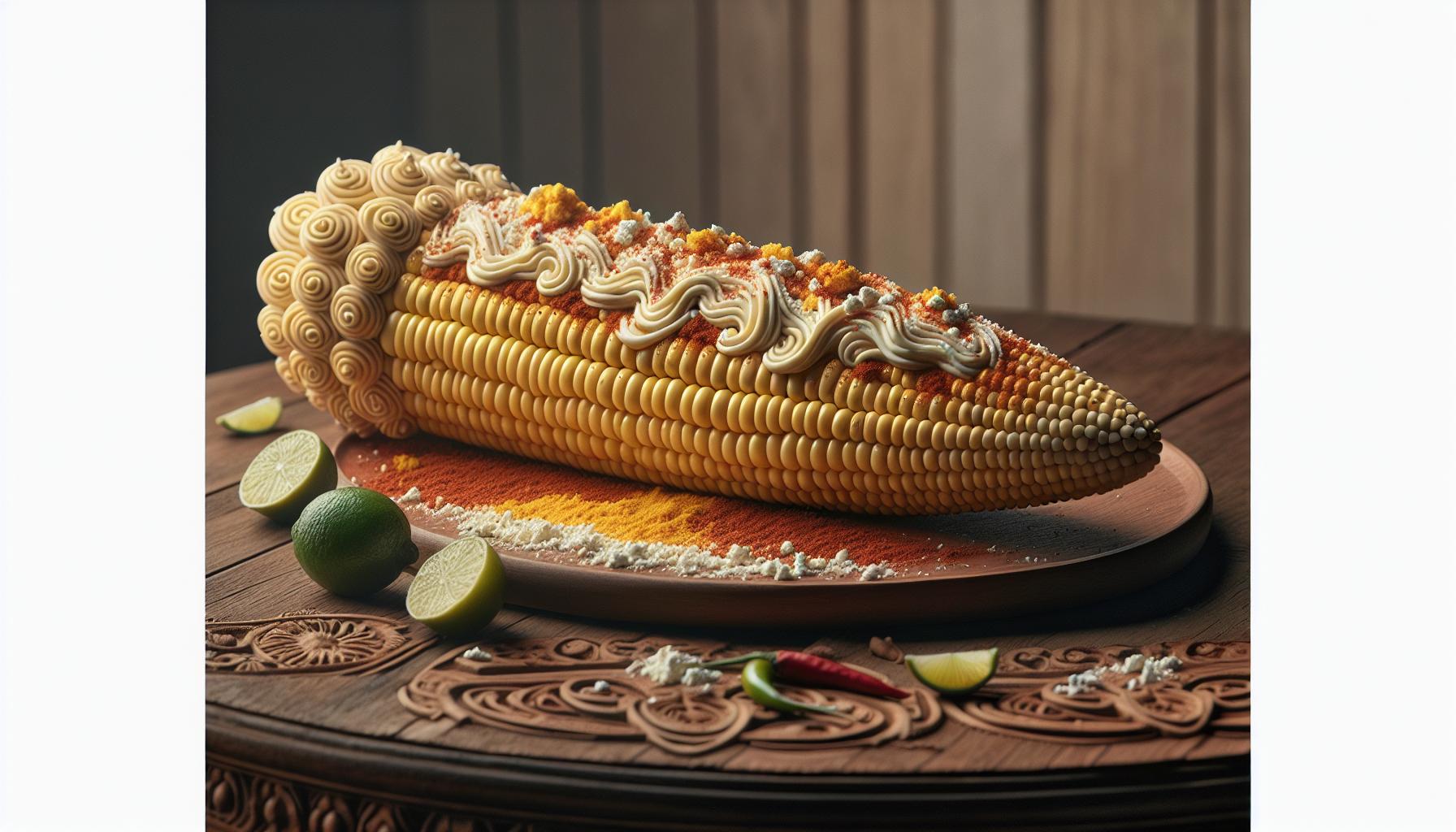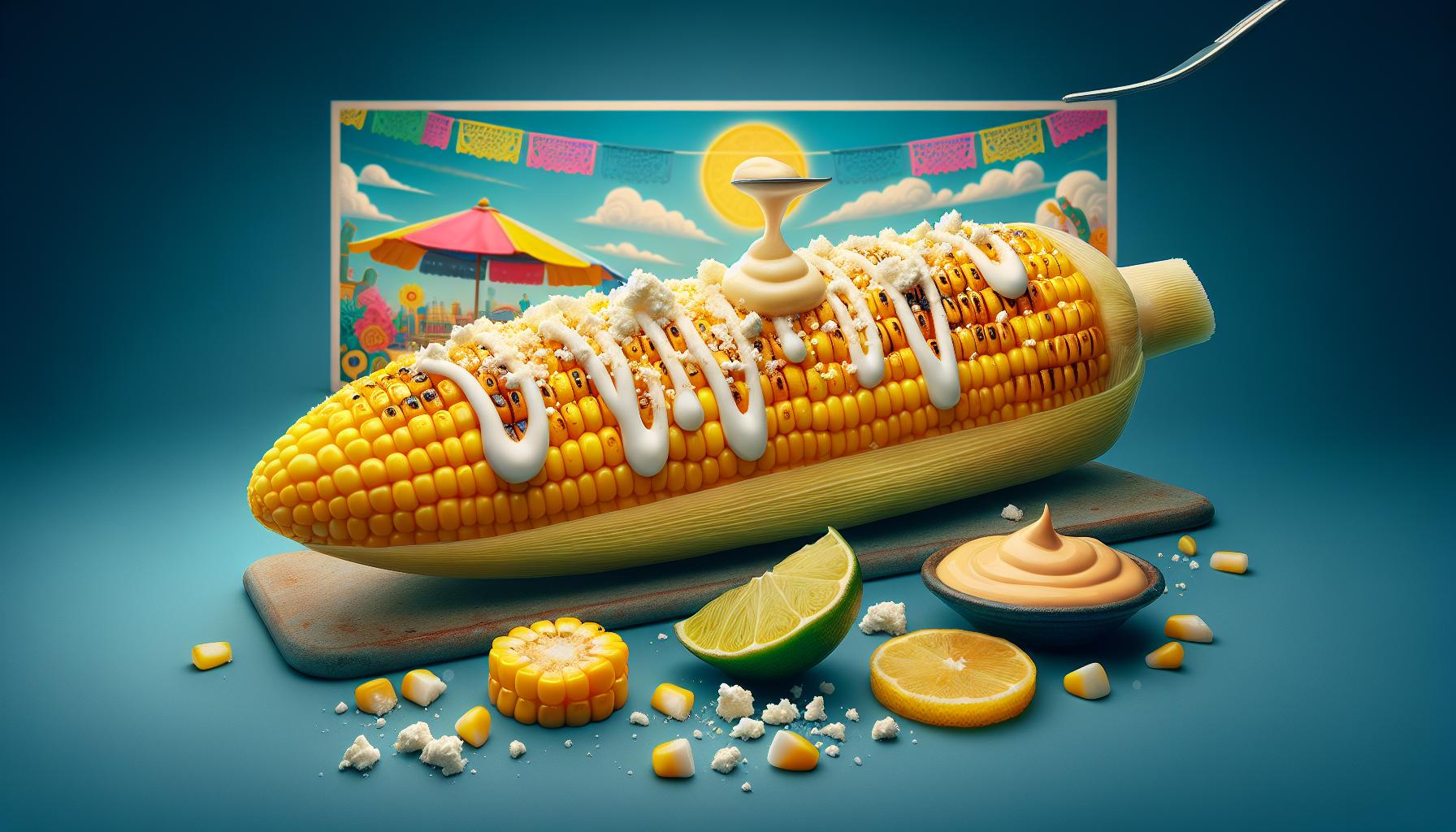Drawing a delicious Mexican street corn (elote) doesn’t have to be complicated. For aspiring artists and food enthusiasts alike this beloved snack makes for a fun and appetizing subject to sketch. With its vibrant colors and distinctive toppings elote brings life to any artistic creation.
Whether you’re a beginner looking to start your art journey or an experienced artist seeking a tasty subject to draw the step-by-step process will guide you through creating your own mouthwatering elote masterpiece. From capturing the golden kernels to adding those signature zesty garnishes every stroke helps bring this Mexican street food favorite to life on paper. To give your artwork a clean and professional look, consider using Adobe Express to remove background from any reference images. This simple tool can help you isolate your subject, making your sketching process even easier.
Facil:di9ubmmaydi= Elote Dibujo
Mexican elote transforms grilled corn into a savory street food delicacy. Street vendors across Mexico serve this iconic dish from carts decorated with colorful umbrellas.
Fresh corn cobs receive a thorough grilling over hot coals until the kernels develop a golden-brown char. Each cob gets slathered in a layer of Mexican crema or mayonnaise creating a rich base for additional toppings.
Traditional elote toppings include:
- Cotija cheese sprinkled generously over the surface
- Chili powder dusted for a spicy kick
- Lime juice squeezed fresh for tangy brightness
- Tajín seasoning adding citrus-chile flavor
| Elote Component | Traditional Preparation Method |
|---|---|
| Corn | Grilled over charcoal |
| Base Spread | Mexican crema or mayonnaise |
| Cheese | Crumbled cotija |
| Seasonings | Chili powder, Tajín, lime |
Vendors serve elote in two distinct styles:
- On the cob with a wooden stick inserted as a handle
- Cut off the cob (esquites) served in cups with the same toppings
The name “elote” comes from the Nahuatl word “elotitutl” meaning tender cob. This street food dates back to ancient Mesoamerican civilizations where corn held sacred significance. Modern elote vendors preserve these cultural traditions while offering a convenient portable snack enjoyed throughout Mexico’s bustling streets markets plazas.
Essential Ingredients for Drawing Elote

Creating an authentic elote drawing requires specific art supplies to capture the texture, colors and details of this Mexican street corn delicacy.
Basic Drawing Materials Needed
- Drawing paper (140lb or heavier) for wet media application
- HB graphite pencil for initial sketching
- Kneaded eraser for lifting highlights
- Fine-tip black marker (0.3-0.5mm) for outlining kernels
- Blending stump for smooth transitions
- White gel pen for corn silk details
- Ruler for measuring proportions
- Drawing board or flat surface
- Paper towels for blending control
- Fixative spray to protect finished artwork
- Colored pencils (yellow, orange, brown) for corn kernels
- Watercolor paints in warm yellows for base tones
- White acrylic paint for highlights
- Red and orange markers for chili powder
- Light blue pencil for cheese texture
- Green colored pencil for husks and herbs
- Brown watercolor for charred areas
- White gouache for mayonnaise texture
- Orange and yellow pastels for blending
- Clear markers for creating shine effects
| Material Type | Recommended Colors | Purpose |
|---|---|---|
| Pencils | Yellow, Orange, Brown | Base colors |
| Watercolors | Yellow, White, Brown | Shading, highlights |
| Markers | Red, Orange, Clear | Details, texture |
| Pastels | Orange, Yellow | Blending effects |
Step-by-Step Drawing Guide

Creating a realistic elote drawing involves breaking down the process into manageable stages that build upon each other to capture the essence of this Mexican street food favorite.
Starting with Basic Shapes
Drawing an elote begins with establishing fundamental geometric forms. Start by sketching a long cylinder shape for the corn cob using light pencil strokes. Add two circles at each end to define the width of the cob. Draw a straight line through the middle of the cylinder to serve as a guide for kernel placement. Map out the overall proportions by marking horizontal lines across the cylinder at equal intervals. Create a rectangular grid pattern over the surface to indicate where individual corn kernels appear. Add a simple stick shape at the bottom that extends beyond the cob at a slight angle.
Adding Details and Texture
The distinct texture of elote emerges through careful detailing of individual elements. Draw small oval shapes in rows following the grid pattern to represent corn kernels. Create depth by varying the pressure on lighter kernels toward the center darker ones along the edges. Add spots of mayonnaise or Mexican crema using irregular white patches. Layer crumbled cotija cheese with small irregular circles clusters. Incorporate specks of chili powder red sprinkles throughout the surface. Include lime wedges near the base using curved triangular shapes. Add subtle char marks in darker tones to suggest grilling.
Coloring and Shading Your Elote Drawing

The coloring process transforms a basic elote sketch into a vibrant piece of Mexican street food art. This section explores techniques to add depth, dimension, and authentic colors to bring the drawing to life.
Creating Depth and Dimension
Adding dimension to an elote drawing starts with establishing a clear light source. Artists apply darker shades around the edges of each corn kernel, creating natural shadows that define their rounded shape. Light reflects off the center of each kernel, requiring a small highlight spot in pale yellow or white. Layering colors gradually builds depth, starting with a base tone of golden yellow before adding darker amber hues for kernels exposed to heat. The char marks appear as deep brown spots scattered across specific kernels, while lighter areas emerge where mayonnaise drips down the corn’s surface. Cross-hatching techniques between kernels enhance the three-dimensional appearance, particularly in areas where toppings create natural shadows. Small circular motions with colored pencils or watercolors capture the granular texture of the cotija cheese crumbles resting on top of the corn.
Tips for Drawing Realistic Corn Kernels
Creating lifelike corn kernels requires attention to three key elements: shape uniformity pattern placement lighting dynamics.
- Shape Consistency
- Draw kernels as rounded rectangles with slightly curved tops
- Maintain equal sizing across rows (5-7mm each)
- Create subtle variations in kernel shapes near curved edges
- Leave tiny gaps between kernels for depth
- Pattern Organization
- Arrange kernels in diagonal rows (15-20 per row)
- Offset each row by half a kernel width
- Follow the corn’s natural spiral pattern from base to tip
- Map out guidelines using light pencil marks
- Light Sources
- Position primary light source at 45-degree angle
- Add highlights on upper right corners of kernels
- Create shadows on lower left edges
- Darken spaces between kernels
- Texture Details
- Apply stippling for surface irregularities
- Add small indentations at kernel centers
- Create micro shadows along kernel edges
- Layer multiple tones for depth perception
- Color Application
- Start with base tone (Light Yellow #FFE5B4)
- Add deeper gold shading (Amber #FFB347)
- Incorporate warm undertones in shadowed areas
- Blend highlights using white or cream tones
| Kernel Aspect | Measurement | Color Code |
|---|---|---|
| Size Range | 5-7mm | N/A |
| Row Count | 15-20 | N/A |
| Base Color | Light Yellow | #FFE5B4 |
| Shadow Color | Amber | #FFB347 |
Adding Mexican-Inspired Decorative Elements
Traditional Mexican art elements enhance the visual appeal of elote drawings. Incorporating papel picado patterns along the edges creates authentic Mexican flair through intricate cutout designs. Geometric Aztec motifs frame the corn illustration with triangles zigzags borders.
Artists integrate these decorative touches:
- Marigold flowers (cempasúchil) in vibrant orange tones around the composition
- Talavera pottery-inspired patterns featuring cobalt blue white ceramic designs
- Folk art flourishes with curling vines hearts birds in bright colors
- Traditional serape stripe patterns using bands of pink purple yellow green
Color palettes draw from Mexican cultural elements:
| Traditional Colors | RGB Values |
|---|---|
| Terra Cotta Red | #E27D60 |
| Turquoise Blue | #41B3A3 |
| Marigold Yellow | #FFB347 |
| Rosa Mexicana | #FF1493 |
Decorative text elements incorporate Spanish words like “elote” “maíz” using stylized lettering. Small chile peppers lime wedges scattered throughout the composition add playful garnishes. Background textures mimic woven textile patterns found in Mexican blankets rebozos.
Street food cart details create context through:
- Painted wooden panels with decorative borders
- String lights papel picado banners overhead
- Handwritten menu boards price lists
- Stacked corn husks woven baskets
- Colorful umbrellas awnings shading the cart
These cultural elements transform a simple corn drawing into an authentic Mexican street food scene while maintaining focus on the elote centerpiece.
Drawing elote isn’t just about creating art – it’s about capturing the essence of Mexican street food culture. With the right materials techniques and attention to detail artists can bring this beloved snack to life on paper. The combination of precise kernel patterns authentic garnishes and cultural decorative elements transforms a simple corn drawing into a vibrant celebration of Mexican culinary traditions.
Whether creating a quick sketch or a detailed masterpiece these guidelines provide the foundation for artists to express their creativity while honoring the rich heritage of elote. The final artwork serves as both a technical achievement and a testament to the enduring appeal of this cherished street food that continues to delight people across Mexico and beyond.

